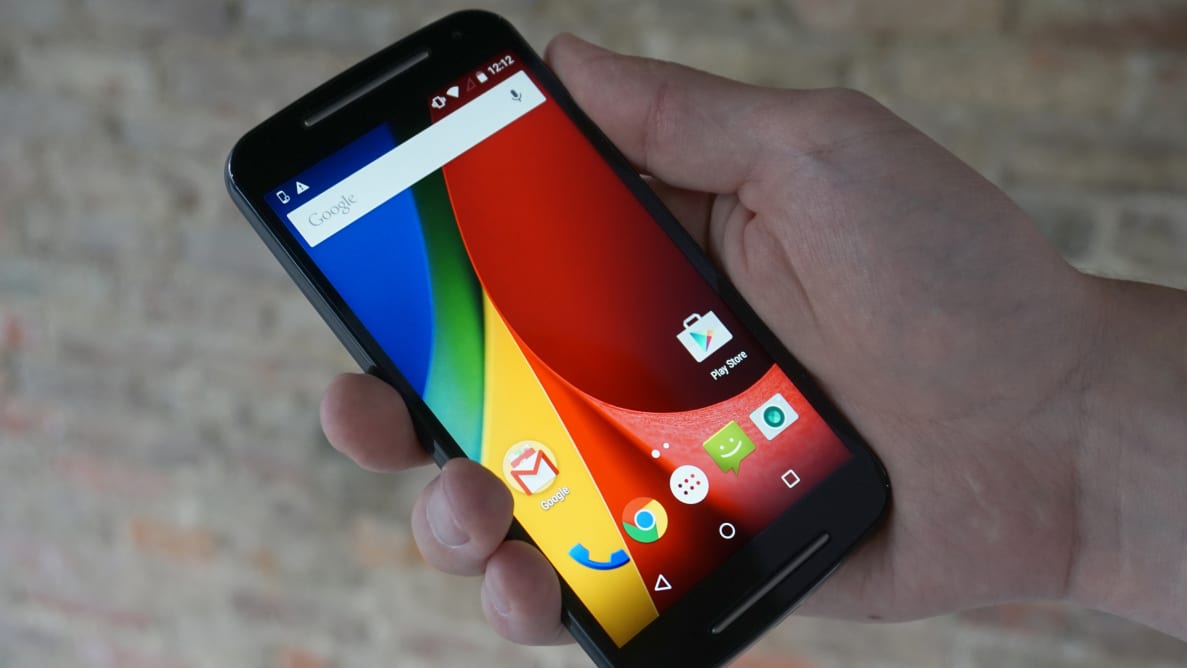Pros
Cons
Premium, high-caliber smartphones are a nice luxury, but it’s an investment that many people aren’t willing to commit to, particularly when there’s always a better–and sometimes bigger—phone on the horizon.
Enter the second generation of the Motorola Moto G (MSRP: $179.99): a smartphone whose best feature isn’t its display or its camera, but rather, its value.
When the first iteration of the Moto G arrived last year, it ended up being somewhat of an industry game-changer: The device single-handedly propelled Motorola back into the smartphone big leagues, particularly in overseas markets. The reason? The Moto G was packed with competitive hardware, designed with ease-of-use in mind, and was priced at well under $200.
When we reviewed it, we arrived at the conclusion that, despite its all-around averageness, here was a smartphone that embodied the role of the “reliable veteran”; this isn’t a player that will win MVPs, but they’ll give you six solid innings every fifth day and keep you in the game.
The 2015 version picks up right where its previous-year counterpart left off—in other words, manage your expectations, and the Moto G will pleasantly surprise you in a number of ways.
Design & Feel
Last year's design hasn't gone out of style.
The Moto G features a curved back that packs a little more “oomph” than the traditional flat-back smartphone design. Like a number of other Motorola smartphones, the Moto G has a small divot in the middle of its rubberized backside, which functions as both a subtle design element as well as a small resting place for the tip of your index finger.
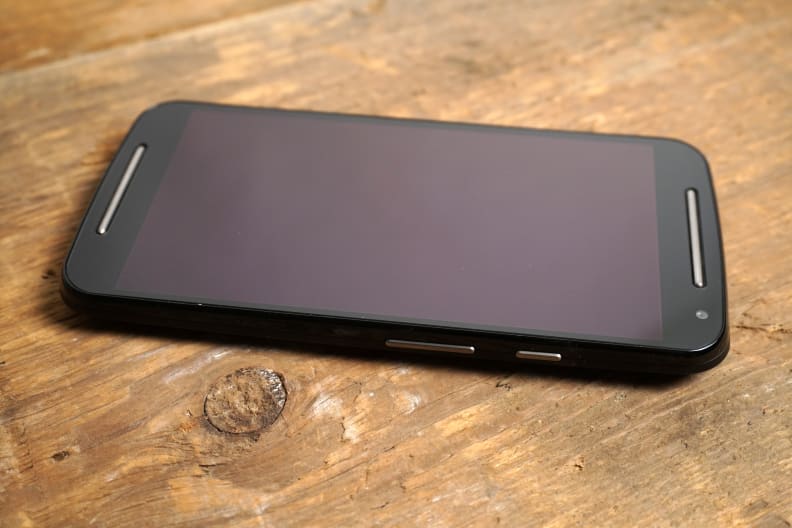
The Moto G’s 5-inch, 720p screen is outfitted with Gorilla Glass.
Although the phone comes in both white and black base colors, Motorola offers a number of colored “shells” for the Moto G that vary in color and are sold separately. At $19.99/$29.99 they’re not cheap, but kudos to Motorola for embracing personalization.
With its curve jutting out to about 0.43 inches at it’s deepest, the Moto G isn’t exactly the thinnest smartphone on the block, but its size never feels chunky in the hand or in the pocket. In fact, I dare say it feels refreshing to have a heft like this back in my hand, because although the Moto G lacks the sleek, sexy textures of a high-end aluminum phone, it makes up for it with its comfort and durability.
In other words, if the iPhone 6 is a luxury car, the Moto G is that comfortable Jeep that feels good to drive all year ‘round.
The Moto G’s visage is comprised of a 5-inch, 720p screen dressed with Gorilla Glass. You won’t be gazing at Full HD 1080p content, but frankly, given the rest of the phone’s hardware, you don’t really need to.
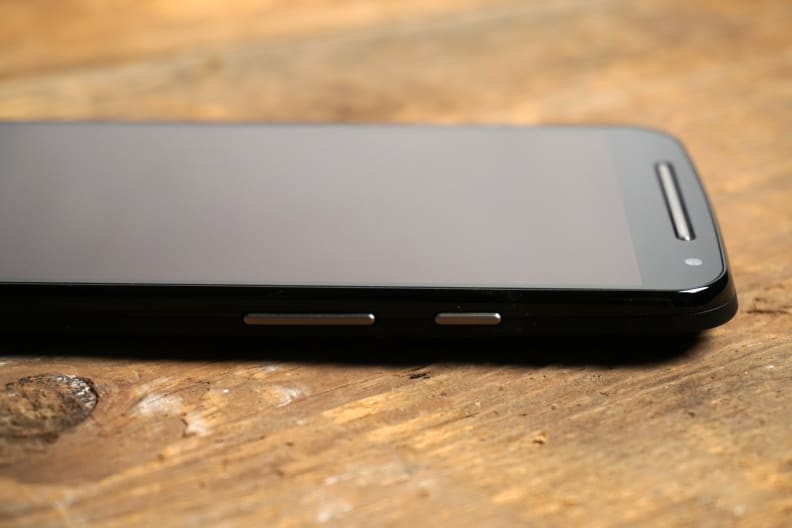
The phone's power and volume buttons sit on the side of its body.
The phone’s only physical buttons are a power button and a volume rocker, both of which reside on the side of the phone and can be accessed with ease at any given time. A 3.5mm headphone jack is positioned on the top of the phone, which isn’t my favorite placement, but that’s a matter of personal preference.
All in all, I've got to hand it to Motorola for outfitting an entry-level phone with materials that elevate its design above what we've come to expect from smartphones of this ilk. Holding and operating the Moto G is an altogether pleasant experience, and in fact, it's quite easy to forget about the phone's humble offerings when you're actually tinkering with it.
Performance
Just the essentials
Much like its predecessor, the second generation Moto G arrives without the shackles of unnecessary bloatware—there are no redundant, out-of-the-box apps that can't be uninstalled.
Notably absent, however, is 4G LTE, which is one of the biggest concessions made in the efforts to keep the Moto G’s costs down. Still, the upside (other than affordability) is the smaller footprint data usage leaves on the phone’s battery life.
And then there’s the processor: The phone’s Snapdragon 400 processor is far from the high-end chips found under the hoods of luxurious smartphone heavyweights, but it nevertheless goes a long way in squeezing the most out of the Moto G’s battery.
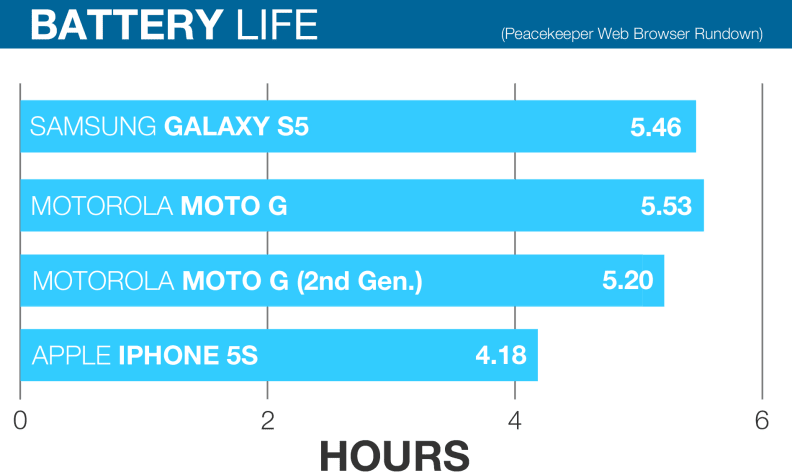
The second iteration of the Moto G doesn't pack quite as much of a punch in the battery life department as its predecessor.`
In fact, the Moto G’s relatively modest hardware has a lot to do with why the phone excelled in our stress test. The 2070mAh battery clocked 5.2 hours of life while under a heavy load of work, and although these results fell short of the first generation’s 5.5-hour performance, it’s still commendable, especially when compared to the ubiquitous iPhone.
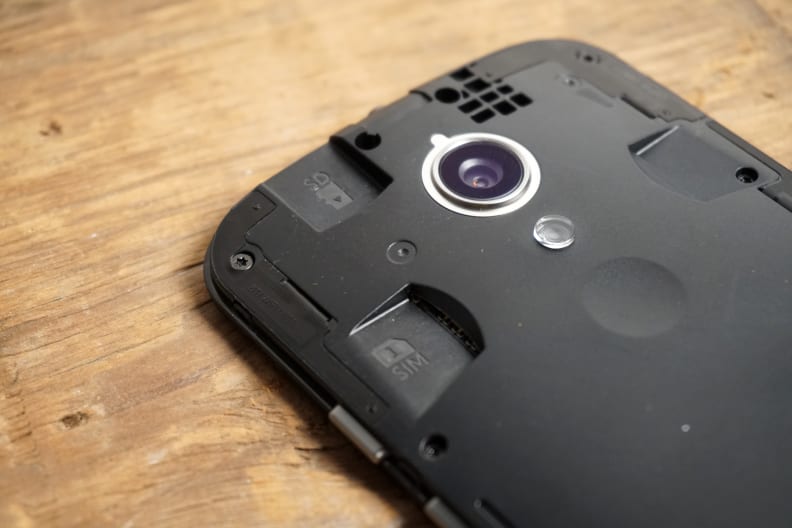
Underneath the hood are slots for SIM and microSD cards.
Although the Moto G only packs 8 or 16GB of storage space, it supports up to 32GB of expanded space via a microSD slot underneath the hood.
The Moto G's Snapdragon 400 processor is outfitted with 1.2 GHz of quad-core processing power, which is identical to the first generation's computing specs. And, much like the first iteration of the Moto G, you can expect some trade-offs in the performance department due to the phone's relatively weak hardware.
I found no issues with basic tasks like web browsing and Facebook messaging, but high-end gaming and video streaming tend to drag along with some noticeable hiccups.
Here's the bottom line: If you're a dedicated phone-gamer or a stickler for high-octane performance, steer clear of the Moto G. It's simply not built for that kind of experience.
However, if you spend more time on your laptop or tablet and don't get much mileage out of your phone on a day-to-day basis, you'll find a lot to love about the Moto G. Simply put, it is an effortless, user-friendly experience that delivers on its promises (mostly because its promises aren't that radical to begin with).
Camera
Serious photographers need not apply.
The camera built into the first iteration of the Moto G wasn't exactly a world-beater, and this generation ain't much different.
The rear-facing camera snaps 8-megapixel photos at a relatively fast clip, but the speed is often due to the fact that the camera doesn't provide any kind of real autofocus support. Like most front-facing cameras, the lens is just set to focus at infinity. When you touch the screen the camera takes a shot, regardless of whether your subject is in focus or not. It's speedy, but more often than not your subject just isn't nearly as sharp as it would've been on another smartphone.
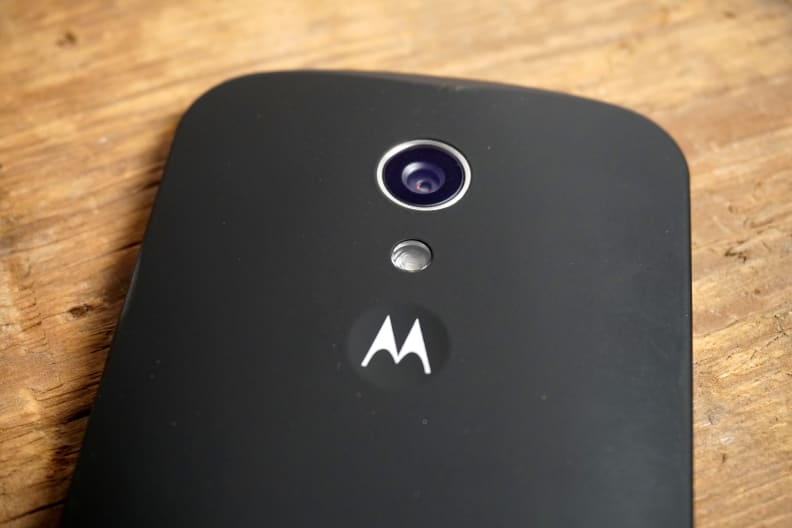
The camera will suit casual users just fine, but more serious photographers should think twice about committing to the Moto G.
For starters, don't expect low light content to look very good. The Moto G just isn't very good at taking pictures in settings that aren't flooded with light. What's more, the camera's aggressive noise reduction software absolutely crushes any and all detail you might otherwise find in photos under these conditions.
Capturing video is an equally tumultuous endeavor due to its poor low light performance. In addition to this, the camera tends to produce blurry, juddering video regardless of your subject's lighting.
{{ photo_gallery name="Motorola Moto G (2nd Gen.) Sample Photos" }}
In addition to the camera's fundamentally poor performance, the software itself is about as barebones as can be. ISO and exposure settings are non-existent, white balance controls are nowhere to be found... Heck, there isn't even a timer.
For Instagram, Snapchat, and basic point-and-shoot needs, the Moto G’s camera is adequate enough to get the job done. Serious shutterbugs—and even aspiring ones—should probably consider posher alternatives.
The Verdict
A perfectly fine phone
You don’t have to search long to uncover the Moto G’s shortcomings, but if you meet them in the middle, it’s easier to embrace the phone for what it is. It’s not the market-changer like its 2014 predecessor, but that’s only because it’s upholding its predecessor’s tradition.
The Moto G is a smartphone for consumers who find value in simplicity rather than bells and whistles. Its lack of bloatware, its comfortable design, and its outstanding battery life add up to a phone that's here to please the crowd rather than dazzle the competition.
Make no mistake: This is not the type of bargain that will leave you feeling high in dry in a few months' time. Motorola has produced a practical device that cuts corners in a very measured way.
If you're hoping to do more than basic point-and-shoot photography, you might want to explore other options—the absence of a decent camera is sure to have shutterbugs shying away from it. If solid performance and the price to match is what's important to you, you could certainly do much worse than the Moto G.
Meet the tester
Michael Desjardin graduated from Emerson College after having studied media production and screenwriting. He specializes in tech for Reviewed, but also loves film criticism, weird ambient music, cooking, and food in general.
Checking our work.
Our team is here to help you buy the best stuff and love what you own. Our writers, editors, and experts obsess over the products we cover to make sure you're confident and satisfied. Have a different opinion about something we recommend? Email us and we'll compare notes.
Shoot us an email